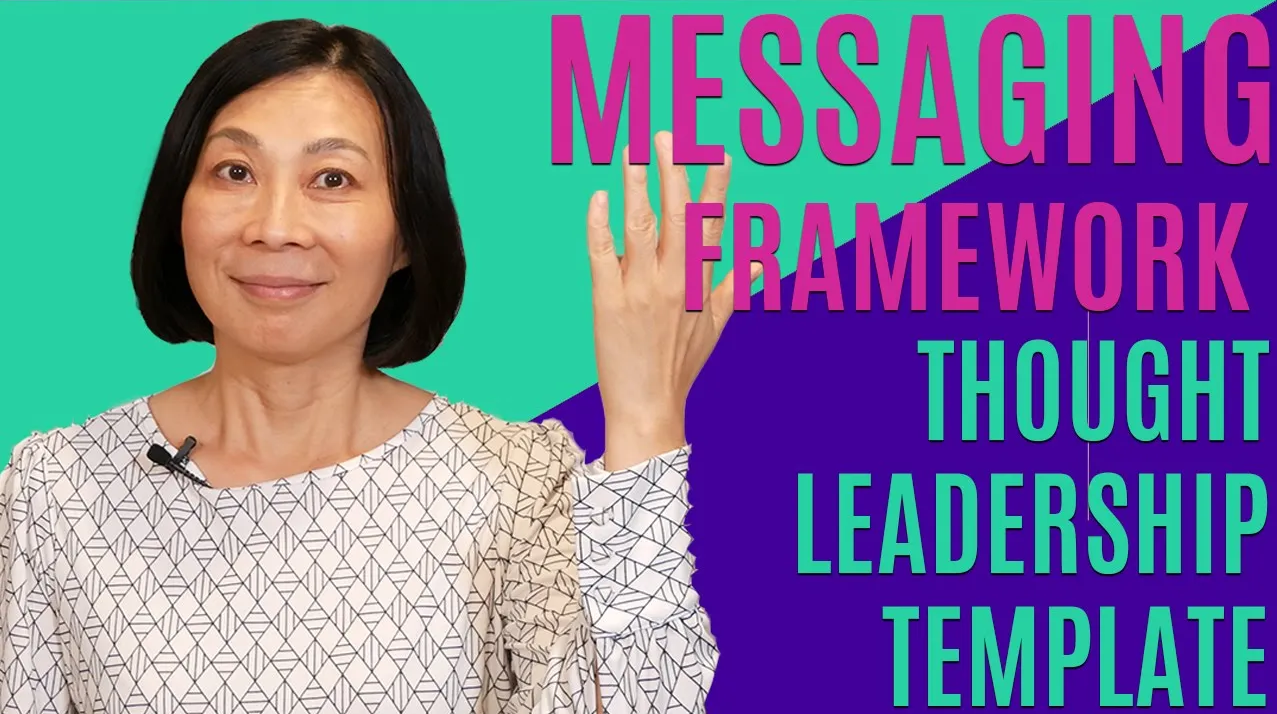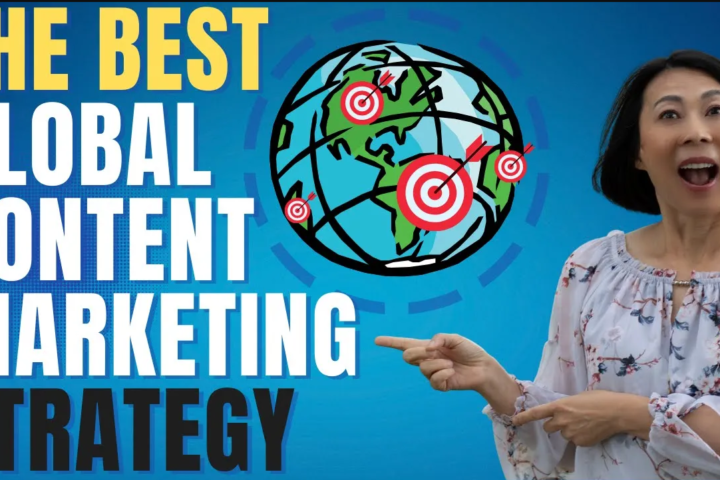
Brands love to be perceived as thought leaders, and many have a thought leadership story.
This video is part three of the series of Messaging Framework, and this time I talk about Thought Leadership.
Before developing their story, brands must have a Thought Leadership Messaging Framework to guide everybody.
If you are interested in watching other videos in the series check them out:
What is Messaging Framework is Part 1
Product Template is Part 2
High-Volume Products Framework is Part 4
As a B2B Marketing Consultant, Author and Speaker, I focus on helping marketers to build marketing and sales alignment. I also help global companies tailor their marketing to a local audience. In addition to my YouTube Channel, I also write blog posts and own my podcast. Check out blog posts and podcast episodes and subscribe to Apple Podcast.
Want to see how I can help you? Schedule a call with me. Let’s talk.
TRANSCRIPT
Hi, this is Pam Didner. Thank you so much for tuning in to B2B Marketing and More with me. This is a place I want to help you to become a better b2b marketer. And at the same time, I share my templates know-how and experience to help you to think strategically and do your job better. By doing that, you can get promoted faster. For today, I want to continue the conversation of the messaging framework series.
This is part three. In part one, I talked about the definition of a messaging framework and the steps you can take to build one. In part two, I’ve shared product-specific templates that you can use to develop the messaging framework.
Today, I want to talk about thought leadership.
Obviously, brands love to be perceived as thought leaders – who doesn’t? Many of them have a thought leadership story. Before developing your story, you should have a thought leadership messaging framework to guide everybody. This framework is different from the Part Two product-specific templates. Now, you can see it on the screen. This is what the template looks like. I want to go through each category with you.
So I will say that out loud, so you get a sense of it. We’re going to start with the objective, target audience, overall narrative, company-specific narrative, the value proposition of the company’s product portfolio, benefits of a company’s product, portfolio messaging, positioning, and also the impact of the messaging positioning messaging narratives. Then the last two categories are the proposed content title for your thought leadership stories and, of course, a list of keywords for content creation.
So let’s talk about each category a little bit more.
Obviously is important to write a specific statement to identify why you need a thought leadership story, a good example is XYZ company addresses its row and a differentiator in the future of cybersecurity, identify a specific product category that you want to stand up, right, so list that as objective the next one is a target audience. Again, try to identify just one audience segment you want to showcase and display your thought leadership story. The next one is the overall narrative. And this is why you know you need to answer why a specific megatrend or a product category is important.
Why is smart factory 4.0 important? Why is digital transformation important? Right? Try to explain that to educate your audience. And the most important thing is for the narratives. You need to write paragraphs, not bullet points. Because you are telling the stories, it is very important to talk about it in kind of a paragraph format, not bullet points, and preferably two or three paragraphs.
Once you describe and educate your audience that specific megatrends or product categories are important, you can talk about why your company is essential in that specific trend or product category.
Now I narrow it down to accompany a specific narrative.
So overall, company-specific narrative, the next thing is really about the value proposition. What one statement do you want to describe that’s unique for your company against the competitors?
So what is that overarching value proposition? After that, you need to talk about the benefits of your product portfolio. You know, for all the products that you offer as a company, what kind of benefit do you provide to your customers, so does your product portfolio reduce risk will increase the growth or enhance the performance of a certain technology and the product solution that you can offer to your customers? These are the couple categories I’m sharing with you regarding the benefits of the value proposition. After that, you identify the messaging positioning, so if you are talking about your company is vital to drive and lead the direction of smart factory 4.0. One of the messaging pillars may be automation or artificial intelligence.
So within that specific topic, what can you do as a company to lead that change and drive the innovation and the messaging pillars?
That I talked about tends to be higher or elevated to support the megatrends. And also the product-specific category. For example, when working with one of my clients, we discussed a smart factory. And, the messaging that we can use to substantiate that claim, our artificial intelligence and the connectivities and automating things to that extent, right? So it’s a much higher level than the product-specific type of messaging pillar.
So once you identify the messaging positioning, the next one is the impact of your messaging positioning. For example, if you said, ” Okay, artificial intelligence is one of the key pillars, then the impact of that is you can use machine learning to predict the quality defects. Right? That’s the benefit of your messaging pillar, your messaging positioning, and then the next thing is messaging narratives.
Can you write two or three paragraphs again to substantiate and elaborate in terms of how artificial intelligence and also the machine learning can help you to predict quality defects so when you need to describe it, you need to show it once you have that information much easier for the content creators to take that to discuss further, and also illustrate your thought leadership story.
Now you have all the information, you could have five to 10 content titles that you can write for your thought leadership story, for example, five trends in digital transformation or the insider’s look around certain trends. For example, write the content title and then discuss it with your internal stakeholders. It’s a great conversation. I have content titles.
There’s always a heated discussion regarding what content they should write to demonstrate their thought leadership story.
Of course, the last category is a list of keywords. If you have keywords from your perspective that you should emphasize when you tell the thought leadership story, you should use that and add that as a part of the messaging framework. So this is part three of the messaging framework series. I hope that you find it useful. Again, contact me anytime if you need help on the messaging framework side of things. I do share my templates, and I also share written samples. If you are interested, send me a quick email at pam@pamdinner.com. I am more than happy to share the information with you.
Thank you so much for tuning in for today’s episode. Appreciate it. It’s a little long and a bit overwhelming. I hope that you get something out of it. If you liked the content, subscribe below and share with a friend who might benefit next episode still is about messaging framework. But the last one, I promise the question I want to answer what if you have many products? Do you have to create a messaging framework for every single one? Right, so I will share the answer with you. See you soon. Bye.



